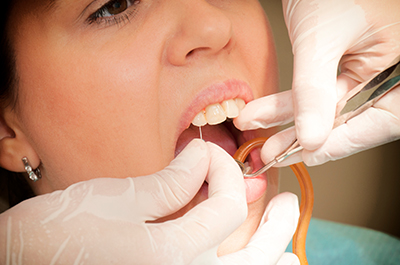 An extraction is the procedure in which the entire tooth is removed from the jaw bone when its health and structure is compromised to an extent beyond repair.
An extraction is the procedure in which the entire tooth is removed from the jaw bone when its health and structure is compromised to an extent beyond repair.
The doctor will evaluate the tooth required for extraction. If the process of extraction of a tooth seems to be too complex, the doctor will give a referral to an oral surgeon.
WHY ARE TEETH EXTRACTED?
– Severely decayed
– Extensive periodontal disease (“gum and bone disease”)
– Fractured in such a way that it is impossible or impractical to repair
– Badly positioned (impacted wisdom teeth)
– Non-functional or poorly functional teeth
Not all wisdom teeth are extracted in our office. The dentist will evaluate the tooth position and determine if it can be removed safely in our office. If it seems to be a complicated procedure, we will consult an oral surgeon for further treatment.
EXTRACTIONS CAN BE CATEGORIZED INTO TWO TYPES:
– Non-surgical
– Surgical (involves cutting of bone)
A non-surgical extraction can quickly become a surgical procedure if the tooth fractures or refuses to loosen under pressure. We perform these procedures only after making the extraction site(s) profoundly numb.
TOOTH EXTRACTION POST-OPERATIVE INSTRUCTIONS
Following tooth extraction you may experience bleeding, oozing, soreness, or moderate to severe pain.
BLEEDING
Your bleeding should stop by 8-12 hours following the extraction. If you experience significant bleeding past this time please call our office immediately. Oozing of pink fluid for 1-2 days is normal.
PAIN
After the tooth extraction pain is best managed with a mild analgesic like Tylenol, Advil, or Aleve. If you experience severe pain that lasts more than 2-3 days after your extraction, please call our office.
DENTAL UPKEEP
It is important to not disturb the extraction site. Remember to eat a soft diet for 24 hours following the extraction. Avoid vigorously rinsing with any type of liquid for the first 24 hours.
AFTER 24 HOURS
Please rinse with warm salt water for 1 minute a few times each day for 3-4 days. This will reduce the number of bacteria in your mouth and will promote better healing.
